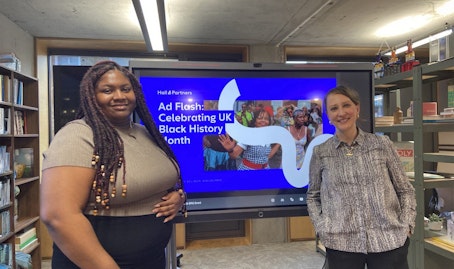Perspectives

Katie Warwick, Partner at Hall & Partners insight agency, argues that the drive for personalised marketing has overcomplicated segmentations, but they are still a critical part to brand growth
There’s a renaissance about audiences in marketing land: identifying them and targeting them. Recent social chatter goes as far as to question the point of segmenting audiences altogether, suggesting they are out of touch, have become overly complicated as marketers try to get really personal and, therefore, unusable.
One of the mistakes we frequently see in segmentation studies is the lack of clarity on how the segmentation is going to be used. For example, if a segmentation needs to inform creative and ad buying, then it should be able to marry up with media demographics.
But don’t forget to leave space to find those additional details on consumers’ personality traits, motivations, needs, wants and values, since these help marketers to tap into human emotions, values, and aspirations so that both messages and creative are designed to artfully connect with the targeted audience.
Deep profiling can avert King Charles and Ozzie Osborne syndrome
If you’re just focused on dimensions like demographics, you’ll end up with the King Charles and Ozzie Osborne syndrome. Both have an almost identical demographic and lifestyle profiles. You could even argue that some of their behaviours match; they both drive expensive cars and enjoy fine dining, but their attitudes, values and potentially beliefs are likely to be very different.
In addition, what truly differentiates one group from another? Without a deeper level of profiling, creative departments may struggle to understand the audiences they are hoping to communicate with at a personal level. Purposeful and empathetic questionnaire development and well-developed target illumination and persona building is key to overcoming this challenge.
Creatives and planners need deep understanding too
Applying innovative techniques to link segmentation samples to media consumption by demographic as well as behaviour, attitudes and values will ensure that lookalike segments on client data management platforms can offer enhanced media targeting. This means creatives and planners can maximise the value of the deep human understanding and audience insights that a robust segmentation provides, giving clear competitive advantage.
Of course there’s a tension point between how broad or deep a segmentation needs to be. Consumers are complex beings and brands that want to connect and engage with them need to understand what’s important to them.
Two speed targeting
Byron Sharp, the ‘mass market is best for brand building’ professor, suggests there are two speeds when it comes to targeting: mass market for brand building; target segments for activation at the bottom of the funnel. I think this is a good way of thinking about it.
Audiences are, ultimately, also part of the masses and marketers need to remember not to create too many boxes. It can be overly reductive to assume for example that all mothers with young children have the same aspirations, attitudes and behaviours. People are individuals, but how they behave around specific occasions – in particular but also time of day or type of purchase – differs. Essentially we do dissimilar things at different times, making occasion-based segmentation particularly useful for repertoire categories that are predominantly defined by specific mood and need states. I am a mother with young children, but there are multiple versions of me depending on the occasion – such as mummy me, work me, one of the girls me, sporty me.
This is not to say that boxes do not play a role in segmentations, because they do. They help brands make sense of a mass market, where the temptation is to spray and pray, and fail to find those emotional connections that make brands relevant and meaningful.
Design segmentations to meet the business and brand growth needs
Segmentations are a powerful and an essential tool to help marketers reach the people who will drive the business forward when they see messages designed to appeal to their habits and needs. They can challenge established perceptions, change how brands go to market and build lifetime value with customers. But regardless of whether they are broad or complex, they must be designed to meet the business and brand growth needs. There is so much more potential to make the latest marketing science techniques and tools more powerful than ever in the service of advertisers.
If you are about to commission a new segmentation or refresh an existing one - have these three principles in mind;
- Have a clear end in mind – Creating a meaningful segmentation that is adopted throughout an organization begins at the end. By defining the objective you want to reach – why do you need a better consumer understanding and how will it impact business decision making for example – you give purpose to the journey
- How will the learnings be used across the business? – Once you are clear on why you need better understanding, you'll know the right way to approach the segmentation that will add value to the business. Agree up front how you will use the learning across the business. How will you socialize? How will you measure success and impact? Segmentations are investments and all investments need to deliver a measured ROI. As Peter Drucker once famously said - if it matters, measure it. And if it's measured, it gets managed.
- Reductive thinking – Segmentations are about making shortcuts, to simplify the complex. However, generic assumptions lead to bad decision making. Strike the balance between understanding and oversimplification. At the end of the day it's a way to better understand why we all do what we do – and that can differ for a plethora of reasons. Identify the big influencers and build out from there.
Want to understand more about effectively growing your brand utilising segmentation?








